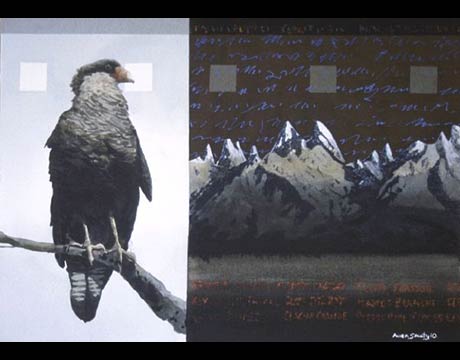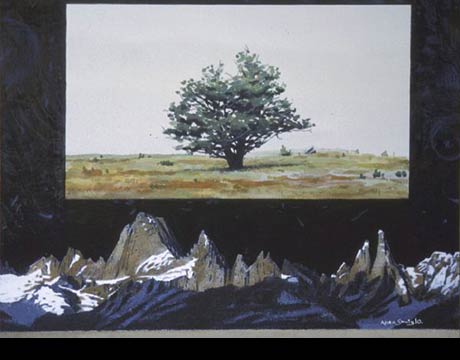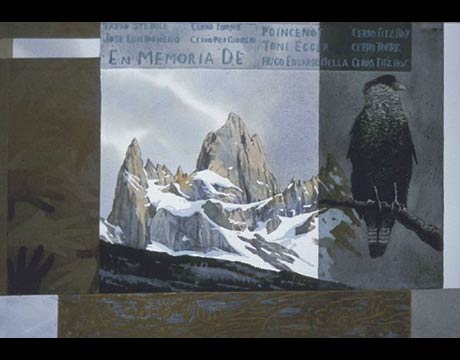Gallery - Past Exhibitions - 2004 - Patagonia
(Click image for slideshow)
I Patagonia sits at the very tail end of the long mountain spine known as the Andes, at the southern terminus of the Americas. At Tierra de Fuego, this range temporarily disappears under the Drake Passage. Further south it reemerges in the ice-covered continent of Antarctica.
Synonymous with remoteness, the sparsely populated region of Patagonia has been often called the last place on earth. Conversely, such a distinction, coupled the incredible visual feast of Patagonia's geophysical features has recently propelled the area into a prime eco-tourist destination.
Patagonia's boundaries and it's identity are both some what vague and open to individual interpretation. It straddles both Chile and Argentina. It encompasses rugged Pacific and Atlantic Ocean coastlines, vast parched grasslands, forests, as well as the framed razor toothed ramparts of the Andes. These peaks are strewn and dolloped with thousands of glaciers and fresh water emerald lakes.
Parque Nacional de Los Glaciares, on the Chile/Argentine border has within it's boundaries most of the incredible features that Patagonia is renown for. With a friend, I hiked camped and painted in this area for 3 weeks in January, 2004.
The first impression that hits you in Patagonia is the overwhelming power of the wind. It howls, shapes, breaks and sandblasts everything, almost continually. Warped by the wind's force, tree limbs take on strange macabre shapes. The faces and the pinnacles of the parks spectacular granite spires, are polished so clean by the wind, that snow and ice have few places to purchase.
Some of the main peaks such as Fitz Roy, Poincenot and Egger are named for climbers, mostly Europeans, who have tried to scale these impossible vertical walls, often doing so in 200 km an hour winds. Although less than half the height of some of the world's other glamour peaks, the immense challenge of these Patagonian mountains have lured dozens of the world's most elite climbers to their deaths over the last 50 years. Of all the peaks in Los Glaciares however, perhaps the most notorious and spectacular is Cerro Torre, the bull's horn.
The ancient rock of Patagonia has also revealed some stunning archeological discoveries. These include fossils of huge 42 foot dinosaurs, massive petrified forests, and the art of ancient indigenous people found in the form of wonderfully preserved cave paintings.
Wedged at the bottom of the Americas, Patagonia's isolation and it's particular environment allowed a unique and varied form of flora and fauna to develop. Great sea birds like the Wandering Albatross patrol the coasts; huge vultures like the Condor and Caracara circle in the clouds; quanacos and pumas dwell in the foothills; a variety of penquin species nest along the shorelines; flamingos are at home in the interior marsh lands and ponds; while delicate lady slippers and other fragile flowers attempt to find refuge from the wind in sheltered pockets. In scientific terms, this amazing ecosystem of Patagonia was first discovered in 1834, by a 25 year old Charles Darwin.
:: BACK TO GALLERY






